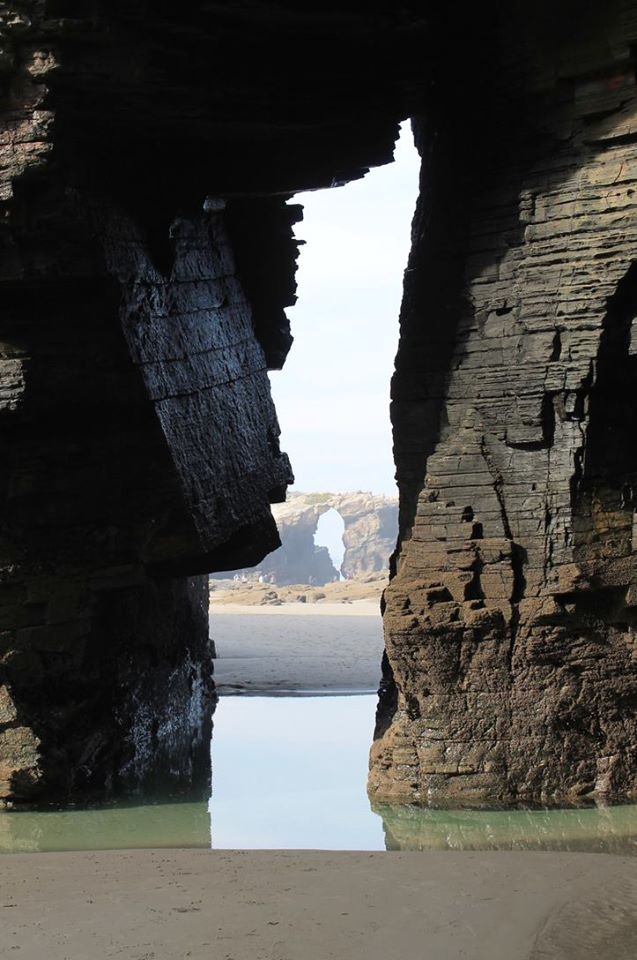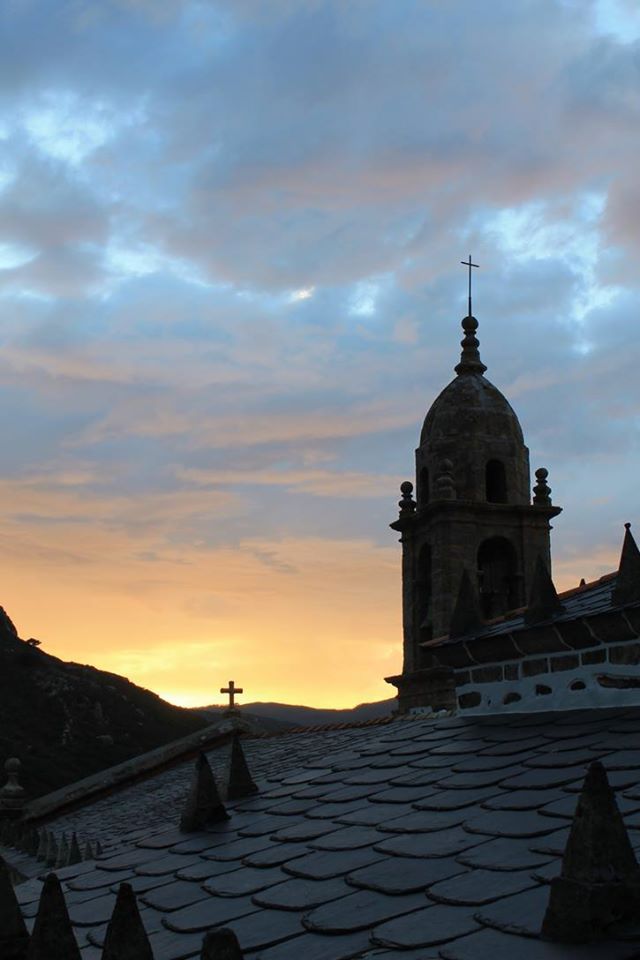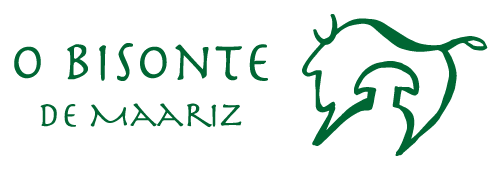

Enviroment
Our region is full of surprises: wonderful natural spaces, as well as archaeological sites and interesting monuments. Among others, you can visit with short trips and day trips the following:
– Mondoñedo, Cathedral and Barrio dos Muiños, Cunqueiro Museum, Diocesan Museum, etc.
– Beach of the Cathedrals (Augas Santas)
– Cave of “Rei Cintolo” and Salto do Encoro
– Sierra do Xistral
– Mirador da Frouxeira and Castrodouro Castle
-San Andrés de Teixido´s Sanctuary
– Viveiro
– Taramundi and Los Oscos
– Celtic Castro of Viladonga
– A Fonsagrada and the Ancares Lucenses
– Santiago de Compostela
– Lugo
– Gijón
– Oviedo
Close to Mondoñedo there are accessible places to swim in the Masma River, with splendid waterfalls such as A Fervenza, and the coast of the A Mariña is full of great beaches.
In our region you can enjoy beautiful landscapes and native forests of chestnut trees (Castanea sativa), oaks (Quercus robur), birches (Betula pubescens), hazel trees (Corylus avellana), walnuts (Juglans regia), laurels (alders (Alnus glutinosa), ash (Fraxinus excelsior), maples (Acer pseudoplatanus), elderberries (Sambucus nigra), etc.
The fauna that inhabits these spaces is very diverse: roe deer (Capreolus capreolus), wild boars (Sus escrofa), foxes (Vulpes vulpes), martens (Tuesday Tuesday), genets (Genetta genetta), hedgehogs (Erinaceus europaeus) , etc. Here you can also spot birds such as the kestrel (Falco tinnunculus), the goshawk (Accipiter gentilis), the eagle mouse (Buteo buteo), the robin (Erithacus rubecula), and nocturnal raptors, such as owls (Tyto alba) and owls ( Athene noctua). At night, common bats (Pipistrellus pipistrellus), forest (Barbastella barbastellus) and horseshoe (Rinholophus ferromequinum) are also activated. .Our rivers still harbor otters (Lutra lutra) and salmon (Salmo salar). Among the reptiles, the green-lipped lizard (Lacerta schreiberi), the galician lizard (Podarcis bocagei), the mountain lizard (Iberolacerta monticola) and the vipers of Seoane (Vipera seoanei) stand out. In addition, it is very common to observe amphibians such as the salamander (Salamandra salamandra), the common toad (Bufo bufo) and the marbled newt (Tritutus marmoratus).
It is also a privileged area in autumn for lovers of mycology. We find easily parasols (Macrolepiota procera), inked coprinus (Coprinus comatus), chanterelles (Lactarius deliciosus), wild mushrooms (Agaricus campestris) and even boletus (Boletus edulis) and many other species, edible and/or of interest to study. In O Bisonte you can learn about our Shiitake growing (Lentinus edodes) and enjoy its tasting if it is the harvest season.
